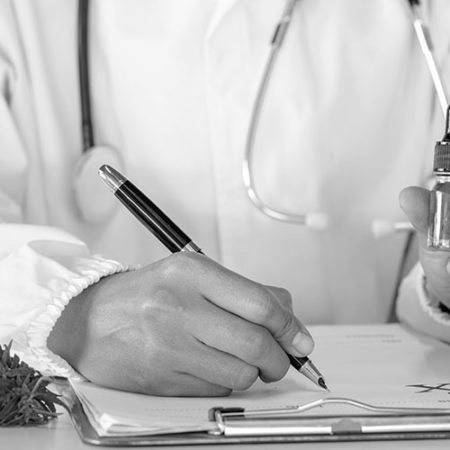 Exploring Minocin's Role in Fighting Acne: a Deep Dive
Exploring Minocin's Role in Fighting Acne: a Deep Dive
Minocin, medically known as Minocycline, is a member of the tetracycline antibiotic family and has gained notoriety for its role in the management of moderate to severe acne. This antibiotic functions by targeting the bacteria that contribute to acne development, particularly Propionibacterium acnes, which resides in the oil ducts of the skin and can provoke inflammation. By curtailing bacterial growth and reducing inflammation, Minocin effectively decreases both the number and severity of acne lesions, offering relief to those afflicted by persistent and stubborn skin blemishes.
Its usage is ideal for patients who have not responded well to conventional treatments such as topical creams or those with extensive, inflamed, or cystic acne that demands a more aggressive approach. Physicians herald Minocin for its efficacy in acne control, though it’s often reserved for cases where other medications have failed to provide results, due to its antibiotic nature and the potential for bacterial resistance. Furthermore, it's noteworthy that the benefits of Minocin often extend beyond mere symptom relief as it delves into the root of the acne problem, providing a comprehensive approach to skin health.
The Science Behind Minocin: How It Works
Minocin, chemically known as minocycline, is a tetracycline antibiotic that specifically targets the bacteria responsible for acne, primarily Cutibacterium acnes (formerly Propionibacterium acnes). It functions by impeding the protein synthesis within bacterial cells, thereby curtailing their ability to multiply and exacerbate skin inflammation. Unlike topical treatments that act superficially, minocycline operates systemically; once ingested, the drug circulates through the bloodstream reaching the sebaceous glands, which are often the sites of bacterial colonization and inflammation.
Beyond its antibacterial action, Minocin also exhibits potent anti-inflammatory properties. This dual action is crucial because the pathogenesis of acne involves not just bacterial infection but also the body's inflammatory response to this infection. Minocin reduces the production of inflammatory mediators such as cytokines, diminishing redness and swelling associated with acne lesions. Consequently, this diminishes the occurrence of comedones (both open and closed), papules, and pustules, which are hallmarks of acne. It's important to recognize that the full benefits of Minocin may take several weeks to manifest, as the life cycle of acne can span weeks to months.
Minocin Vs. Other Acne Treatments: a Comparison
Minocin, known generically as minocycline, is a tetracycline antibiotic commonly employed in the management of moderate to severe acne. Its function hinges on its antibacterial properties, putting a halt to the growth of bacteria that contribute to acne development, and its anti-inflammatory effects that reduce redness and swelling. This contrasts with other treatments like benzoyl peroxide, which primarily work by killing bacteria on the surface of the skin, and salicylic acid, which helps to unclog pores. Minocin’s systemic approach is considered more potent for inflamed acne types, unlike topical solutions that target local issues on the skin surface.
Comparatively, oral isotretinoin, another severe acne contender, offers a widespread mechanism, including reducing sebum production, but often brings with it a higher risk of adverse effects and thus requires close monitoring. For milder cases, over-the-counter options or hormonal treatments such as birth control pills are typically recommended; however, these may not be as effective for the cystic and nodular acne that Minocin can tackle. Considering efficacy and tolerance, dermatologists might gravitate towards Minocin for certain profiles of acne, tailoring treatment strategies to individual patient needs, resistant strains, and previous responses to acne medications.
The Real-life Impact of Minocin on Skin Health
Minocin, a brand name for minocycline, has been instrumental in transforming the lives of those who struggle with acne. Its efficacy is not confined to clinical trials but is evident in the day-to-day experiences of countless individuals. Users often report significant improvements in acne severity, experiencing fewer breakouts and a noticeable reduction in the presence of inflammatory lesions. The psychological benefits are equally noteworthy, with many feeling an uplift in self-esteem and a decrease in the social anxiety that frequently accompanies severe acne. Dermatologists regularly document these transformations, capturing the progress through before-and-after photographs that showcase clearer, healthier skin over periods of sustained treatment.
Despite these successes, the journey with Minocin is unique to each individual, with some facing challenges that require attention and management. While many enjoy clearer skin, others may have varying responses due to differences in skin types, the severity of acne, and adherence to treatment protocols. The impact of Minocin is also seen in the way it enables people to simplify their skincare routines, as its systemic action diminishes the need for extensive topical regimens. This streamlining of skincare practices not only reduces the time spent managing acne but also alleviates the financial burden associated with purchasing multiple skincare products.
Navigating the Potential Side Effects of Minocin
Like any medication, Minocin, also known as Minocycline, can have potential side effects that patients must be aware of while using the drug to combat acne. Common adverse reactions can range from dizziness, fatigue, and vertigo to more gastrointestinal complaints such as nausea and diarrhea. Photosensitivity is another side effect, which necessitates the diligent use of sunscreen to protect the skin from ultraviolet radiation. While most side effects are typically mild and temporary, informing a healthcare provider about any persistent or bothersome symptoms is vital for patient safety.
Serious side effects, although rare, may include hypersensitivity reactions like urticaria, angioedema, and anaphylaxis. There's also a risk of developing drug-induced lupus erythematosus or autoimmune hepatitis. Due to these potential risks, it is crucial that treatment with Minocin is started at the lowest effective dose and closely monitored by a healthcare professional. Adjusting lifestyle and dietary habits may also help mitigate some side effects, but any significant changes in health or symptoms should prompt immediate medical consultation.
Maximizing Minocin Efficacy: Tips and Best Practices
To optimize the results of Minocin in the treatment of acne, it is critical to adhere to the regimen prescribed by a healthcare provider. Compliance with medication plays a central role in effectiveness; thus, patients must take Minocin at the correct times and avoid skipping doses. Taking the medication with a full glass of water can minimize the risk of esophageal irritation and ulcers. It's also important to note that Minocin can increase sensitivity to sunlight, so applying a broad-spectrum sunscreen and wearing protective clothing when outdoors is recommended to prevent sunburn.
Engaging in a skin-care routine that complements Minocin therapy can further enhance its benefits. Gentle cleansing, avoiding abrasive scrubs and irritating agents, and not picking at acne lesions can help minimize inflammation and promote healing. In addition, consulting with a dermatologist about non-comedogenic moisturizers and make-up products that won't clog pores can also be beneficial. Keeping track of any changes in skin condition and reporting side effects to a healthcare provider ensures that the treatment plan can be adjusted as necessary to improve outcomes while maintaining patient safety.


